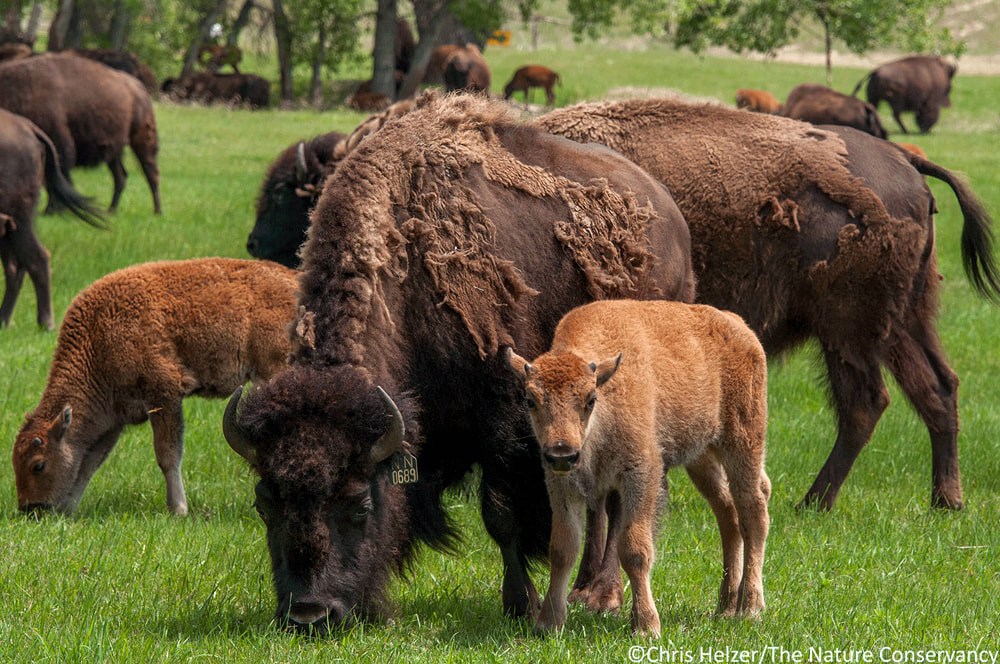|
By Chris Helzer Because they can’t run away, plants may seem helpless against the many large and small herbivores that like to eat them. Nothing could be further from the truth. Many plants have physical defenses such as thorns or stiff hairs to deter animals from eating them. Grasses contain varying levels of silica, which can increase the abrasiveness of their leaves and help make them more difficult to eat and digest. In addition, the chemical makeup of many plants helps make them unpalatable or toxic to potential herbivores. While herbivory is certainly a major threat, plants also have a variety of defenses against pathogens (diseases). If you’re interested in more background on this topic, here is a really nice overview of plant defenses against both diseases and herbivores. Within the last few years, there have been a couple of published studies that highlight some fantastic strategies plants use to defend themselves. In the first of those, German scientists studied a wild tobacco plant and found that when it is attacked by a caterpillar the plant releases a chemical that, in turn, attracts a predatory bug to eat the caterpillar. The production of the bug-attractant is triggered by the caterpillar’s saliva. Essentially, then, the caterpillar sets off an alarm that calls in predators to eat it. How cool is that? A second study, done at the University of Missouri-Columbia, found that a species of mustard plant could detect the vibration signature of a caterpillar chewing on one of its leaves. When the plant identified that signal, it increased production of chemicals that make its leaves taste bad to herbivores. Researchers were able to replicate and reproduce the vibrations and trigger the response in the lab. They also showed that other kinds of vibrations did not cause the plants to defend themselves, so the chemical production appeared to be a direct response to herbivory. These and other research projects help show that plants are not at all defenseless. Not only do they have strategies to make themselves more difficult to eat (toxins, spines, etc.), they can also respond when they are attacked. In prairies, there are numerous examples of plants defending themselves in interesting ways, including sunflowers that produce sweet stuff to attract predatory ants and grasses that increase their silica content under intensive grazing pressure. Of course, herbivores have evolved their own tricks to counter all those plant defenses. Several insect species, for example, have developed ways to deal with the toxins produced by milkweed plants and happily munch away on leaves that would kill other insects. Now its the milkweed’s turn to (through natural selection and over many years) come up with a response to that response. The world is pretty fascinating, isn’t it? So, the next time you’re walking through peaceful-looking prairie on a pleasant morning, remember that those little plants you’re crushing beneath your feet may not be as helpless as they appear. Sure, those plants are mostly fighting back against animals trying to eat them, but you may still find yourself an accidental victim of their defense strategies. Experienced hikers are well acquainted with the abrasive edges of grass leaves and the sharp spines on species such as roses and cacti. At one time or another, most of us have blundered into a patch of nettles or poison ivy. No, plants are certainly not helpless. Let’s just be thankful they haven’t (yet) figured out how to chase us down. A huge thank you to Chris Helzer for authoring this week's blog. Chris is The Nature Conservancy’s Director of Science in Nebraska. To enjoy more photos and discussions about prairie ecology, restoration, and management, follow Chris's blog "The Prairie Ecologist."
0 Comments
Your comment will be posted after it is approved.
Leave a Reply. |
Blog CoordinatorDee Hudson
I am a nature photographer, a freelance graphic designer, and steward at Nachusa's Thelma Carpenter Prairie. I have taken photos for Nachusa since 2012. EditorJames Higby
I have been a high school French teacher, registered piano technician, and librarian. In retirement I am a volunteer historian at Lee County Historical and Genealogical Society. Categories
All
Archives
January 2024
|
CONNECT WITH US |
|




 RSS Feed
RSS Feed